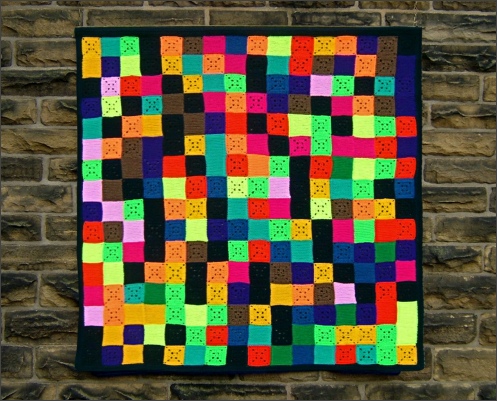




Easter Conference time came round again. As usual there were many interesting ideas
to play with but the real highlight was meeting Simon Singh, author of Fermat’s Last
Theorem and The Code Book. I had previously listened to the reading of The Code Book
on Radio 4. I found it fascinating but it was nothing compared with the impact of
the man himself. Simon gave an amazing talk about many different types of encryption.
I learned a great deal but the I-
It didn’t take long to finish. The planning presented a few problems. We needed twenty-
The next challenge was to decide on the message and the number of squares to be used. We weren’t even sure how many letters we needed to use for there to be enough clues to crack the code. More by chance than anything else we decided on a 16 x 16 square, giving 256 squares altogether. We later discovered that half this number would be enough to crack most simple messages.
Cracking this type of code relies on knowing the frequency of the letters in a normal
piece of writing and this is generally the same whether you are reading a child’s
book or an academic tome. The most frequent letter is E, followed by A, H, N, O,
S, and T (not necessarily in that order). When the same 3 letter word appears more
than once in a sentence it will probably be THE or AND. If it ends in E it will probably
be THE so all the other Ts, Hs and Es can be identified. A 3 letter word at the beginning
of a sentence is not likely to be AND. A word of one letter is very likely to be
A or I. Two squares the same, next to each other, means there must be a double letter.
B, L, P, S and T commonly occur as double letters, others are rarer or non-
We decided on a message that was relevant to the afghan itself, which left us with two more problems. The first was how we should represent spaces between words. On paper, a space shows where a word ends but we couldn’t leave a hole. The solution was to use a ‘background’ colour of navy blue. Spaces between words were navy crochet squares; spaces between sentences were navy knitted squares. This left the final problem of fitting the message, including these squares, into the total of 256. A little juggling and rewording provided a suitable solution. The afghan was named Code Comfort. The message says:
the-
The afghan had a code-
